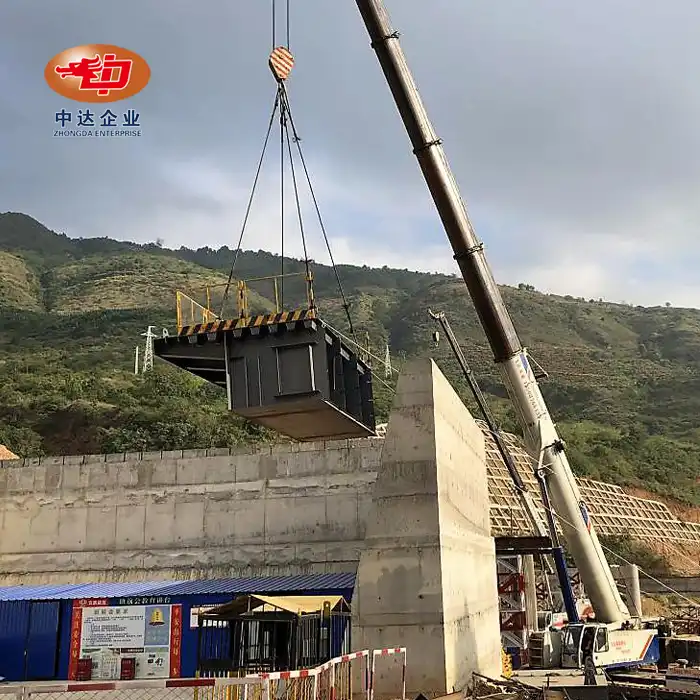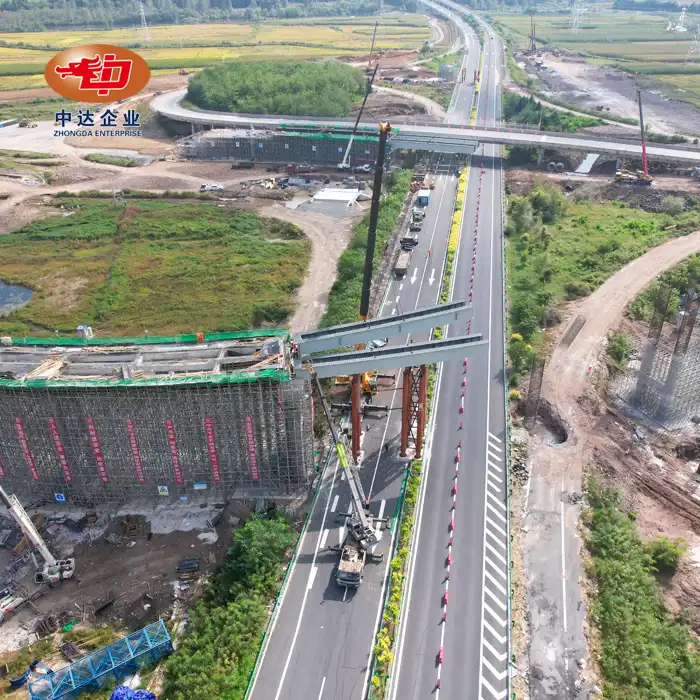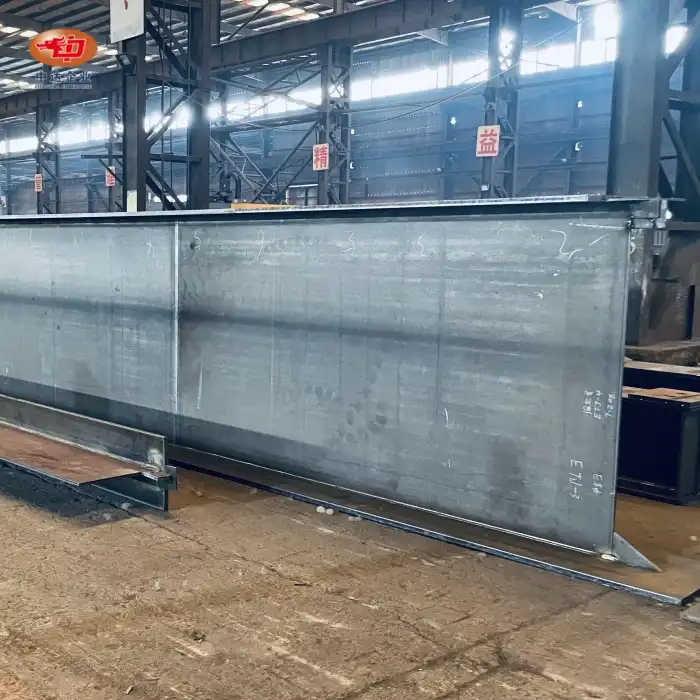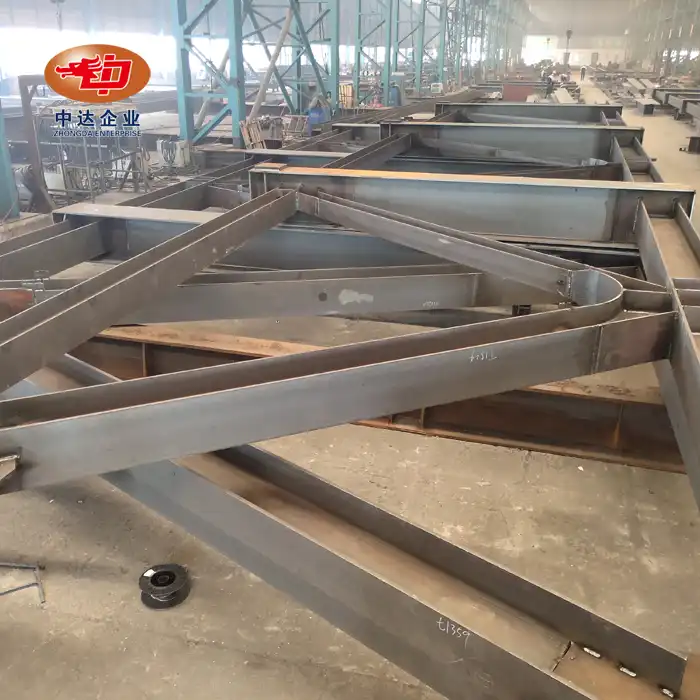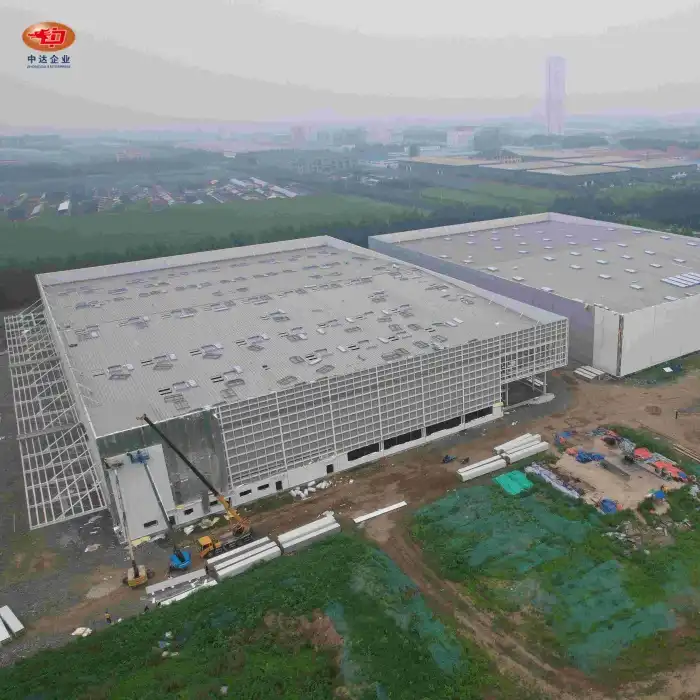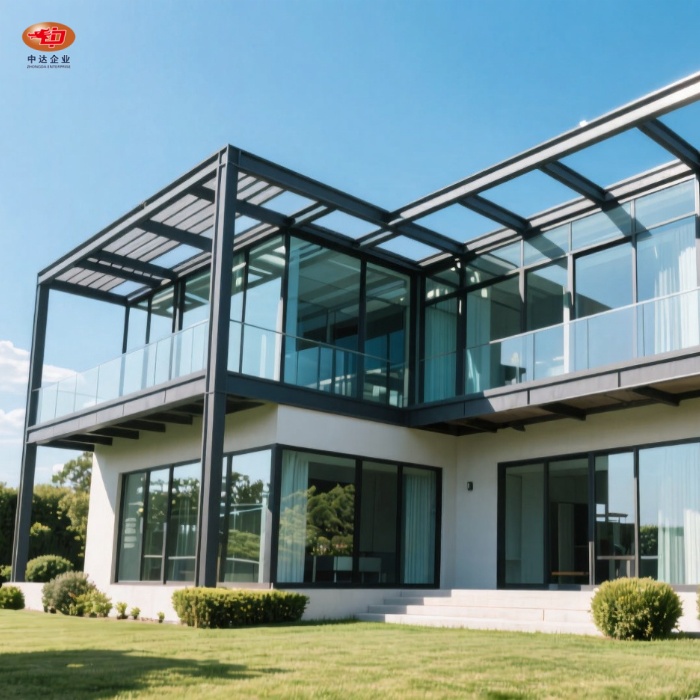
Wind Load Calculations for Tall Steel Structures
Wind load calculations for tall steel structures are crucial for ensuring the safety, stability, and longevity of high-rise buildings and towers. These calculations help engineers determine the forces exerted by wind on a structure, allowing them to design robust and resilient steel frameworks that can withstand even the most challenging environmental conditions. In this comprehensive guide, we'll explore the importance of wind load calculations, the methods used to perform them, and how they contribute to the overall integrity of tall steel structures. At Shenyang Zhongda Steel Structure Co., Ltd., we understand the critical role that wind load calculations play in the design and construction of tall steel structures. With our state-of-the-art 120,000 m2 facility and 60,000-ton annual capacity, we specialize in delivering precision steel solutions that meet the highest standards of quality and safety. Our expertise in BIM-driven prefabrication and -60°C Weathering Steel Anti-corrosion Technology ensures that our structures can withstand even the harshest environmental conditions.
Understanding Wind Loads and Their Impact on Tall Steel Structures
The Nature of Wind Loads
Wind loads are dynamic forces that act on structures due to the movement of air. These forces can vary in intensity and direction, depending on factors such as wind speed, building height, and surrounding terrain. For tall steel structures, understanding and accurately calculating wind loads is essential to prevent structural failure and ensure occupant safety.
Factors Affecting Wind Loads
Several factors influence the magnitude and distribution of wind loads on tall steel structures:
- Building height and shape
- Surrounding topography and nearby structures
- Wind speed and direction
- Atmospheric pressure and temperature
- Surface roughness of the structure
Consequences of Inadequate Wind Load Calculations
Failing to accurately account for wind loads can lead to severe consequences, including:
- Structural damage or collapse
- Excessive swaying or vibrations
- Compromised occupant comfort and safety
- Increased maintenance costs and reduced lifespan of the structure
Methods for Calculating Wind Loads on Tall Steel Structures
Static Analysis Methods
Static analysis methods are commonly used for simpler structures and involve calculating wind loads based on average wind speeds and pressures. These methods include:
- Equivalent Static Wind Load Method
- Gust Factor Method
- Quasi-Static Method
While these methods are relatively straightforward, they may not capture the full complexity of wind behavior around tall structures.
Dynamic Analysis Methods
Dynamic analysis methods account for the time-varying nature of wind loads and are more suitable for tall and flexible steel structures. These methods include:
- Spectral Analysis
- Time History Analysis
- Computational Fluid Dynamics (CFD) Simulations
Dynamic analysis provides a more accurate representation of wind loads, especially for steel structures with complex geometries or in areas prone to extreme weather events.
Wind Tunnel Testing
Wind tunnel testing is a physical method used to simulate wind effects on scale models of structures. This approach offers several advantages:
- Accurate representation of complex aerodynamic phenomena
- Ability to study wind-induced vibrations and vortex shedding
- Validation of numerical analysis results
At Zhongda Steel, we collaborate with leading wind engineering laboratories to ensure our designs are optimized for wind performance.
Implementing Wind Load Calculations in Steel Structure Design
Building Codes and Standards
Wind load calculations must strictly adhere to both local and international building codes and standards to ensure structural safety and regulatory compliance. Key references include ASCE 7, Eurocode 1 (Part 1-4), and ISO 4354, which provide comprehensive guidelines for evaluating wind effects on structures. At Zhongda Steel, our team remains updated with evolving standards, integrating them into our design processes to guarantee resilience and legal conformity across all projects, thereby minimizing risks and enhancing public safety.
Structural Optimization
Accurate wind load calculations are essential for optimizing the structural design of tall steel buildings. They enable engineers to determine appropriate steel member sizes, design efficient lateral load-resisting systems for steel structures, and incorporate damping mechanisms to mitigate wind-induced vibrations. By utilizing our BIM-driven prefabrication process, Zhongda Steel rapidly iterates and refines designs based on wind analysis results. This approach not only improves material efficiency and reduces costs but also ensures a robust and sustainable structural solution for steel structures.
Performance-Based Design Approaches
Advanced wind load calculations facilitate performance-based design, which focuses on achieving specific performance goals beyond mere code compliance. This methodology encourages innovative and efficient structural solutions, seamless integration of architectural and engineering elements, and superior building behavior under diverse wind conditions. At Zhongda Steel, we adopt performance-based principles to deliver structures that excel in functionality, safety, and aesthetic appeal, ensuring optimized performance throughout the building’s lifecycle.
Conclusion
Wind load calculations are a critical aspect of designing and constructing tall steel structures. By accurately assessing and accounting for wind forces, engineers can create buildings and towers that are not only safe and stable but also efficient and economical. At Shenyang Zhongda Steel Structure Co., Ltd., we combine cutting-edge technology, extensive experience, and a commitment to quality to deliver steel structures that stand the test of time and nature's forces. Our expertise in wind load analysis and structural optimization ensures that every project we undertake is built to withstand the challenges of its environment.
FAQs
1. How often should wind load calculations be updated for existing structures?
It's recommended to reassess wind loads every 10-15 years or after significant changes in surrounding structures or climate patterns.
2. Can wind loads affect the foundation design of tall steel structures?
Yes, wind loads can create overturning moments that must be considered in foundation design to ensure overall structural stability.
3. How does building shape influence wind loads on tall steel structures?
Aerodynamic shapes can reduce wind loads, while irregular or boxy shapes may increase them. Tapered or twisted designs can help mitigate wind effects.
Expert Steel Structure Solutions for Wind-Resistant Designs | Zhongda Steel
When it comes to wind-resistant tall steel structures, Zhongda Steel is your trusted partner. Our expert team combines advanced engineering techniques with high-quality materials to create structures that withstand even the most challenging wind conditions. As a leading steel structure manufacturer and supplier, we offer tailored solutions to meet your specific project requirements. Contact us at Ava@zd-steels.com to discuss how we can support your next wind-resistant steel structure project.
References
1. Holmes, J. D. (2015). Wind Loading of Structures. CRC Press.
2. Kareem, A., & Tamura, Y. (2015). Advanced Structural Wind Engineering. Springer.
3. American Society of Civil Engineers. (2016). Minimum Design Loads and Associated Criteria for Buildings and Other Structures (ASCE/SEI 7-16).
4. European Committee for Standardization. (2010). Eurocode 1: Actions on structures - Part 1-4: General actions - Wind actions.
5. Irwin, P., Denoon, R., & Scott, D. (2013). Wind Tunnel Testing of High-Rise Buildings. Routledge.
6. Simiu, E., & Yeo, D. (2019). Wind Effects on Structures: Modern Structural Design for Wind. John Wiley & Sons.
YOU MAY LIKE














